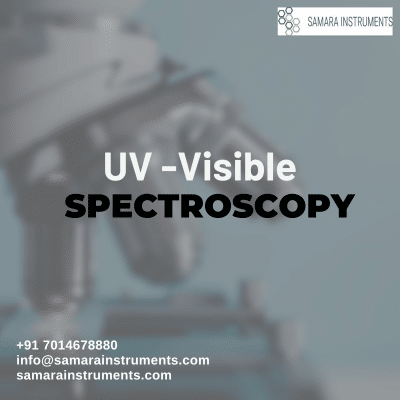UV Visible Spectroscopy
Ultraviolet-visible (UV-Visible) spectroscopy emerges as a highly effective and indispensable analytical method, shedding light on the absorption characteristics of both ultraviolet (UV) and visible light across a diverse range of substances. This technique thrives upon the foundational premise that various chemical compounds exhibit distinct behaviors when absorbing specific wavelengths of light. This exceptional capacity for absorption serves as the bedrock for identifying and quantifying compounds within a given sample, establishing UV-Vis spectroscopy as an invaluable tool across a spectrum of scientific domains.
The Bedrock of UV Visible Spectroscopy
At the heart of UV-Vis spectroscopy’s efficacy lies the Beer-Lambert law, a foundational principle dictating that the absorption of light within a solution is in direct proportion to critical variables: the concentration of the absorbing species, the path length of light’s journey through the solution, and the extinction coefficient characterizing the absorbing species.
The extinction coefficient encapsulates a compound’s inherent ability to absorb light at specific wavelengths. Remarkably, this coefficient remains intrinsic to the compound, impervious to alterations in concentration within the solution. The mathematical embodiment of the
Beer-Lambert law takes shape as:
A = εbc
where:
A signifies the absorbance of light
ε symbolizes the extinction coefficient of the absorbing species
b denotes the path length of light through the solution (measured in centimeters)
c stands for the concentration of the absorbing species (measured in moles per liter)
Dynamics of a UV Visible Spectrophotometer
The UV-Vis spectrophotometer, a stalwart instrument, meticulously gauges the absorbance of light emitted from a sample. It integrates pivotal components that collaboratively empower its functions:
- A light source emitting both UV and visible light
- A monochromator, essential for isolating specific light wavelengths
- A sample holder designed to securely house the specimen
- A detector facilitating the quantification of light transmission through the sample
- A readout device, pivotal for conveying light absorbance measurements
The light originating from the source traverses the monochromator, adeptly selecting a designated wavelength from the light spectrum.
This wavelength then courses through the sample holder, embracing the specimen securely. The detector meticulously gauges the light’s passage through the sample, with resultant absorbance data presented on the readout device. These readings yield insights into the extent of the sample’s absorption of incoming light.
The Multifarious Applications of UV-Vis Spectroscopy
The versatile prowess of UV-Vis spectroscopy bestows upon it the role of an invaluable asset spanning diverse scientific realms:
Chemistry: An adept tool for identifying and quantifying chemical compounds across varied samples.
Biology: Illuminating the intricate structure and dynamic functions of vital biomolecules.
Medicine: Facilitating disease diagnosis and monitoring treatment progress.
Environmental Science: Contributing to the quantification of embedded pollutants within the environment.
Food Science: Assisting in the meticulous analysis of food product quality.
Forensics: Discerning crucial insights by identifying materials and trace evidence.
The Bounty of Advantages and Constrained Limitations
UV-Vis spectroscopy unveils an impressive array of advantages, augmenting its status within the scientific community:
Simplicity and Accessibility: Its straightforward operational mechanics render it approachable and user-friendly.
Cost-Efficiency: With relatively economical implementation, it democratizes access to analytical insights.
Versatility: Its applicability extends across various scientific disciplines and scenarios.
Inclusivity: From organic and inorganic compounds to biological entities, UV-Vis spectroscopy accommodates diverse substance categories.
However, this technique grapples with certain constraints warranting consideration:
Moderate Sensitivity: In comparison to alternate spectroscopic techniques like Nuclear Magnetic Resonance (NMR) spectroscopy, UV-Vis spectroscopy may exhibit comparatively reduced sensitivity.
Challenges in UV Absorption: The methodology encounters hurdles when grappling with compounds that absorb UV light.
Sample Matrix Influence: The outcomes of UV-Vis spectroscopy could be influenced by alterations within the sample matrix.
In Conclusive Reflection
In summation, UV-Vis spectroscopy stands tall as a powerful analytical companion, seamlessly integrating itself into an array of scientific inquiries. Its operational simplicity and cost-effectiveness make it a welcoming prospect, even with its relatively lower sensitivity in contrast to alternative techniques. While its prowess in measuring UV-absorbing compounds might present limitations, the unwavering role of UV-Vis spectroscopy in both research and analytical pursuits remains undiminished.


